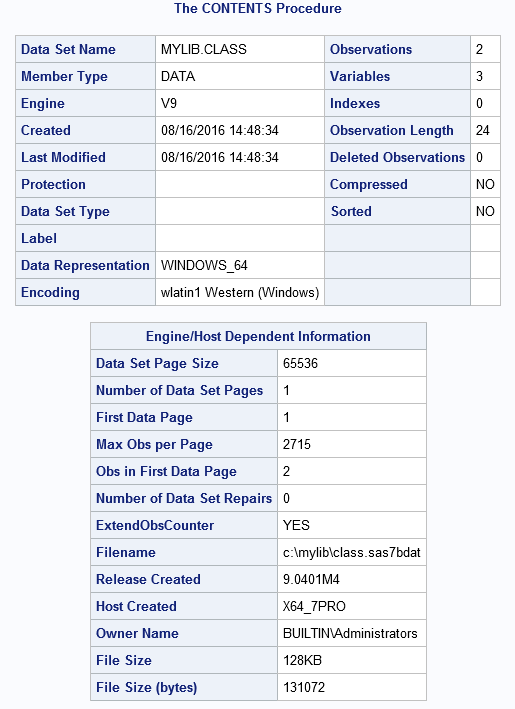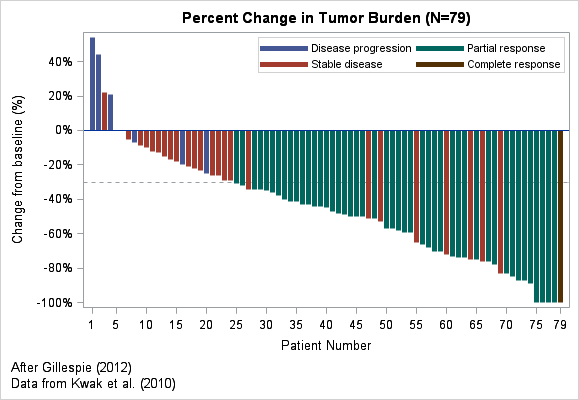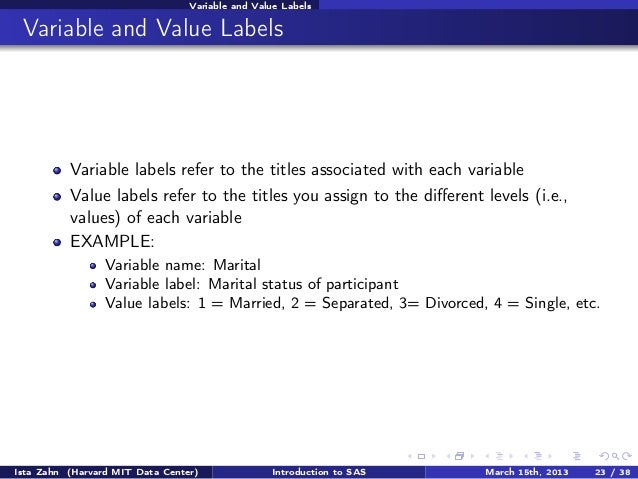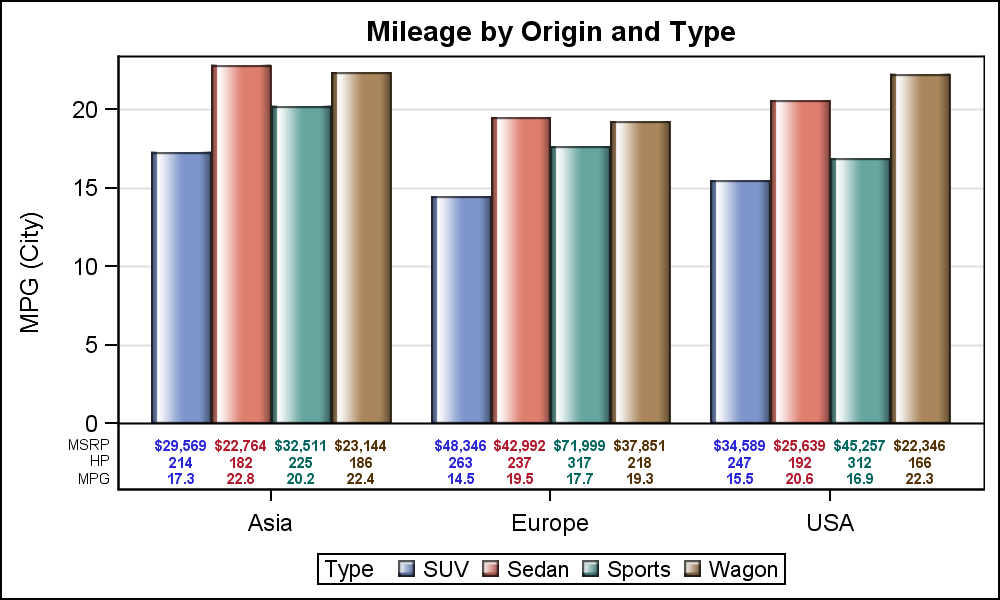39 sas label statement
HBar with Data Labels - Graphically Speaking - SAS Blogs CATEGORYORDER=respdesc is used to get a graph with descending response values. Here is the SGPLOT program. title 'Actual Values by Name with Data Labels'; proc sgplot data=bars noborder noautolegend; hbar name / response=actual nostatlabel dataskin=pressed displaybaseline=auto. datalabel=name datalabelattrs= (weight=bold) datalabelfitpolicy ... Statements : LABEL - SAS Using a LABEL statement in a DATA step permanently associates labels with variables by affecting the descriptor information of the SAS data set that contains the variables. You can associate any number of variables with labels in a single LABEL statement. You can use a LABEL statement in a PROC step, but the rules are different.
SAS Help Center SAS® 9.4 DATA Step Statements: Reference documentation.sas.com ... Customer Support SAS Documentation. SAS® 9.4 and SAS® Viya® 3.5 Programming Documentation | SAS 9.4 / Viya 3.5. PDF EPUB Feedback. Welcome to SAS Programming Documentation for SAS® 9.4 and SAS® Viya® 3.5. What's New. Syntax Quick Links.

Sas label statement
How to Label Variables in SAS - SAS Example Code In SAS, you can create a variable label with the LABEL statement. You can use this statement to assign one or more labels using 3 methods, namely a SAS DATA Step, the PROC SQL procedure, and the PROC DATASETS procedure. The exact syntax of the LABEL statement depends on the method of choice. 'label' Statement - Boston University When a label statement is placed in a data step, the label stays with the variable for all subsequent procedures, unless relabeled. When placed in a procedure the label only stays attached to the variable for that procedure. Use double quotes if there is to be a single quote in the label. For example, label mombp="mother's systolic bld pressure"; Statements: LABEL Statement - 9.2 - SAS Using a LABEL statement in a DATA step permanently associates labels with variables by affecting the descriptor information of the SAS data set that contains the variables. You can associate any number of variables with labels in a single LABEL statement. You can use a LABEL statement in a PROC step, but the rules are different.
Sas label statement. SAS Help Center National Language Support. DS2 and FedSQL Programming. XML LIBNAME Engine. System Options. Integrating SAS 9.4 and SAS Viya. SAS/CONNECT for SAS Viya User's Guide. Using PC Files in Your SAS Session. Batch and Line Mode Processing. Universal Printing. Overview of SAS Procedures | SAS Library Some other statements that can be used with most SAS procedure steps are: BY variable(s); Causes the procedure to be repeated automatically for each different value of the named variable(s). The data set must first be sorted by those variables. ID variable(s); Give the name of a variable to be used as an observation IDentifier. LABEL var ... PDF Techniques for Labeling SAS® Variables If you have hundreds of variables, your LABEL statement can go on for pages. No one wants to type all those labels. If the text for the labels is similar or is available electroni-cally, there are better methods than typing the text in your program. In theory, there could be SAS® syntax to set ... Chow, Adam, "Macro To Put Variable Labels ... SAS Help Center Label statements can be used in a DATA step and within some PROC steps. If a label is assigned to a variable in a DATA step or in PROC DATASETS, the label is permanently assigned in the output data set descriptor. Some PROCs, such as PROC PRINT, can temporarily associate a label with a variable for use during the procedure.
Statements : Labels, Statement - SAS The LABEL statement assigns a descriptive label to a variable. A statement label identifies a statement or group of statements that are referred to in the same DATA step by another statement, such as a GO TO statement. Examples In this example, if Stock=0, the GO TO statement causes SAS to jump to the statement that is labeled reorder. Labeling | SAS Learning Modules Creating and using value labels Labeling values is a two step process. First, you must create the label formats with proc format using a value statement. Next, you attach the label format to the variable with a format statement. This format statement can be used in either proc or data steps. LABEL Statement :: SAS(R) 9.3 Statements: Reference Using a LABEL statement in a DATA step permanently associates labels with variables by affecting the descriptor information of the SAS data set that contains the variables. You can associate any number of variables with labels in a single LABEL statement. ... SAS Help Center: Label: Statement The statement label identifies a statement or group of statements that are referred to in the same DATA step by another statement, such as a GO TO statement. Examples Example 1: Jumping to Another Statement In this example, if Stock=0, the GO TO statement causes SAS to jump to the statement that is labeled reorder.
label: Statement :: SAS(R) 9.3 Statements: Reference A statement label identifies a statement or group of statements that are referred to in the same DATA step by another statement, such as a GO TO statement. Example: Jumping to Another Statement In this example, if Stock=0, the GO TO statement causes SAS to jump to the statement that is labeled reorder. Ultimate Guide To SAS Format And Informat - 9TO5SAS An informat is an instruction that SAS uses to read data values into a variable. For example, the following value contains a dollar sign and commas: $1,000,000. You can remove the dollar sign ($) and commas (,) before storing the numeric value 1000000 in a variable, by applying the COMMA11. informat to this value. LABEL Statement :: SAS/ETS(R) 13.1 User's Guide The LABEL statement assigns SAS variable labels to variables in the output data sets. You can give labels for any number of variables in a single LABEL statement. The default labels for variables depend on the file type. Extra-long labels ( > 256 bytes ) reside in the OUTCONT data set as the DESCRIPT variable. Automating SAS variable labels creation - SAS Users The most direct way of creating column labels is by explicitly assigning them to the data variables. You can do it during the data table creation in a DATA step using either LABEL statement or ATTRIB statement. Alternatively, you can do it after your data table is already created by using PROC DATASETS' MODIFY statement with the LABEL= option.
Solved: Label statement not working... - SAS Support Communities Re: Label statement not working... Posted 10-30-2013 12:20 PM (9409 views) | In reply to gstullo. 1. Try creating new dataset instead of overwriting the current one, ie data samples2 rather than data samples. 2. Run a proc print to verify the labels are created: proc print data=samples2 label; var visit:; run;
Suppress variable labels in SAS procedures - The DO Loop Now, I'm sure that the procedure "means" well (pun intended), but I don't need to see the labels for these variables. I can probably remember that the SepalLength variable is a measurement of the "Sepal Length"! On a whim, I searched for the terms "PROC MEANS" and "NOLABEL" and—Awesome!—was led to a SAS Knowledge Base article entitled "New option to suppress variable labels in PROC MEANS."
LABEL Statement - SAS The LABEL statement specifies a label of up to 255 characters for parameters and other variables used in the model program. Labels are used to identify parts of the printout of FIT and SOLVE tasks. The labels will be displayed in the output if the LINESIZE= option is large enough. Chapter Contents Previous Next Top
The FSEDIT Procedure : LABEL Statement - SAS You must specify the LABEL option in the PROC FSEDIT statement in order for fields in the FSEDIT window to be identified with labels rather than with variable names. Thus, the LABEL statement is useful only in conjunction with the LABEL option. Reminder:
SAS Help Center: LABEL Statement Label statements can be used in a DATA step and within some PROC steps. If a label is assigned to a variable in a DATA step or in PROC DATASETS, the label is permanently assigned in the output data set descriptor. Some PROCs, such as PROC PRINT, can temporarily associate a label with a variable for use during the procedure.
Statements : ATTRIB Here are examples of ATTRIB statements that contain. single variable and single attribute: attrib cost length=4; single variable with multiple attributes: attrib saleday informat=mmddyy. format=worddate.; multiple variables with the same multiple attributes: attrib x y length=$4 label='TEST VARIABLE';
Solved: VLABEL Question - SAS Support Communities Re: VLABEL Question. Posted 04-11-2012 06:37 PM (1046 views) | In reply to SAShole. I wanted to offer a simple approach:=. proc contents OUT= provides a dataset with the labels as data you can use simply to generate a LABEL statement. %let data1 = data_with_labels; %let data2 = data_without ;
Statements: LABEL Statement - 9.2 - SAS Using a LABEL statement in a DATA step permanently associates labels with variables by affecting the descriptor information of the SAS data set that contains the variables. You can associate any number of variables with labels in a single LABEL statement. You can use a LABEL statement in a PROC step, but the rules are different.
'label' Statement - Boston University When a label statement is placed in a data step, the label stays with the variable for all subsequent procedures, unless relabeled. When placed in a procedure the label only stays attached to the variable for that procedure. Use double quotes if there is to be a single quote in the label. For example, label mombp="mother's systolic bld pressure";
How to Label Variables in SAS - SAS Example Code In SAS, you can create a variable label with the LABEL statement. You can use this statement to assign one or more labels using 3 methods, namely a SAS DATA Step, the PROC SQL procedure, and the PROC DATASETS procedure. The exact syntax of the LABEL statement depends on the method of choice.

![SAS Tutorial for Beginners to Advanced - Practical Guide [ 2021 ]](https://cdn.mindmajix.com/blog/images/sas-program-structure_04.png)




Post a Comment for "39 sas label statement"